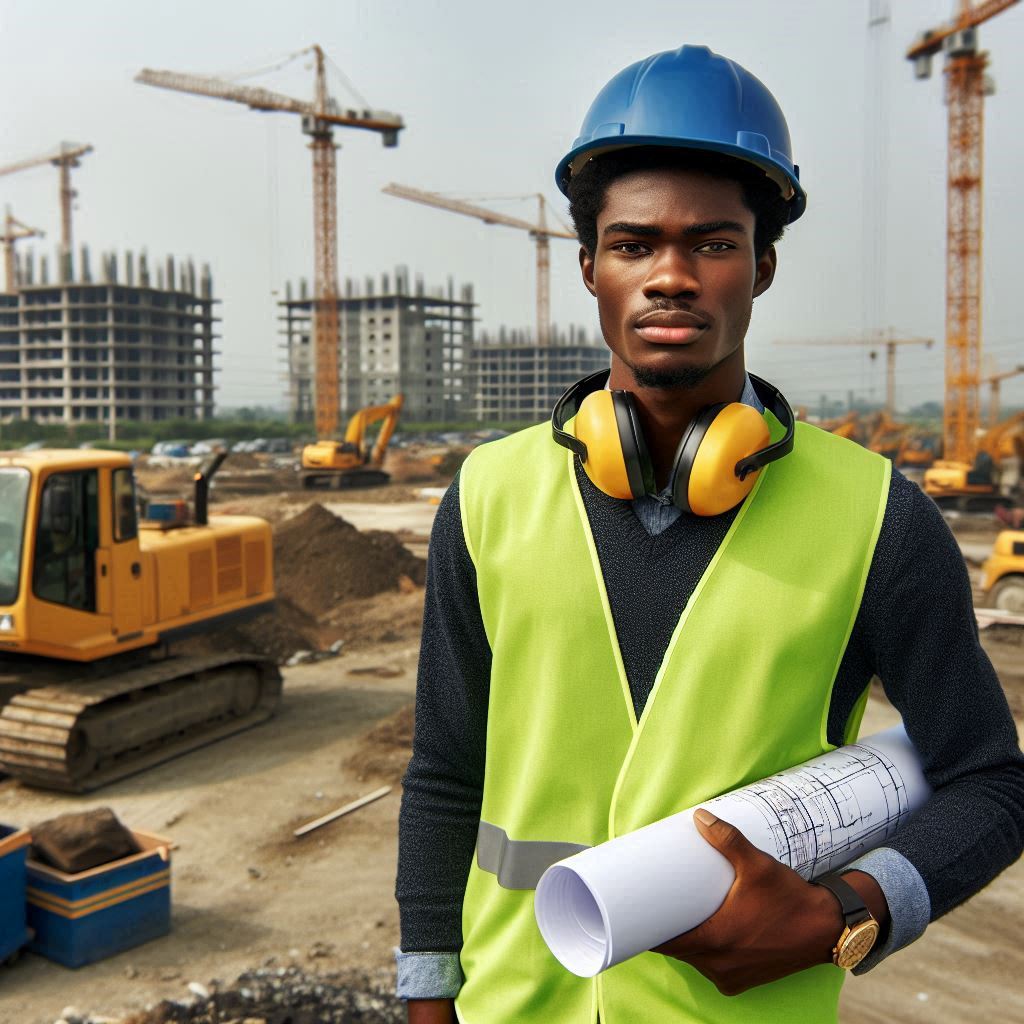Introduction
Building tech education encompasses a broad spectrum of knowledge and skills, ranging from architectural design and construction management to innovative building materials and sustainable practices.
It equips individuals with the expertise needed to navigate the complexities of the construction industry while promoting environmentally conscious and socially responsible approaches to building.
Sustainable development, a concept integral to global progress, entails meeting the needs of the present without compromising the ability of future generations to meet their own needs.
It encompasses economic prosperity, social equity, and environmental integrity, seeking to strike a balance between these pillars for the betterment of society as a whole.
In this context, the role of building tech education in achieving sustainable development goals cannot be overstated.
By educating future professionals in sustainable construction practices, building tech education fosters a mindset of innovation and responsibility.
It empowers individuals to design and construct buildings and infrastructure that minimize environmental impact, optimize resource utilization, and promote resilience in the face of environmental challenges.
Building Tech Education as a Catalyst for Innovation
Firstly, Building tech education plays a crucial role in driving innovation within the construction and infrastructure development sector. Here’s how:
Fostering Innovation in Construction
Building tech education equips professionals with the knowledge and skills needed to think creatively and implement new ideas in the construction industry.
By staying up-to-date with the latest trends and technologies, individuals can push the boundaries of traditional practices and explore innovative solutions to common challenges.
Examples of Innovative Technologies
- Building Information Modeling (BIM): BIM allows for the creation of virtual representations of buildings, enabling stakeholders to visualize and analyze projects before construction begins.
- Green Building Practices: Technologies such as solar panels, green roofs, and energy-efficient HVAC systems are revolutionizing the way buildings are designed and constructed.
- Prefabrication and Modular Construction: These methods streamline the construction process, reduce waste, and improve overall project efficiency.
- Digital Twins: Digital twin technology creates a real-time digital replica of a physical asset or infrastructure, enabling better monitoring and maintenance.
Impact on Sustainable Development
Innovation in building tech is essential for achieving sustainable development outcomes.
By incorporating green building practices and energy-efficient technologies, construction projects can reduce their environmental footprint and contribute to a more sustainable built environment.
Additionally, advancements in materials science and construction techniques allow for the creation of more resilient and durable structures that can withstand natural disasters and climate change impacts.
Driving Economic Growth
Innovative technologies and practices in the construction industry can also drive economic growth by creating new opportunities for job creation, investment, and productivity improvements.
By embracing innovation, countries can enhance their infrastructure networks, attract foreign investment, and foster a culture of entrepreneurship within the construction sector.
Basically, building tech education serves as a catalyst for innovation in construction and infrastructure development.
By nurturing creativity, encouraging the adoption of new technologies, and promoting sustainable practices, professionals in the field can drive positive change and contribute to the achievement of sustainable development goals.
Read: Nigerian Universities Offering Adult Education Courses
Skills Development and Capacity Building
Skills and Competencies Developed Through Building Tech Education
Building tech education equips individuals with essential skills and competencies crucial for sustainable development in Nigeria.
Through comprehensive programs, students develop proficiency in various areas, including architectural design, construction management, structural engineering, and sustainable building practices.
These skills are vital for addressing the challenges of rapid urbanization, resource depletion, and environmental degradation.
Students learn how to use industry-standard software for architectural drafting and design, such as AutoCAD, Revit, and SketchUp.
They gain proficiency in creating detailed plans, 3D models, and virtual simulations of building projects. Additionally, they develop skills in structural analysis and design, enabling them to ensure the safety and stability of structures.
In construction management courses, students learn project management principles, budgeting, scheduling, and procurement.
They acquire leadership skills, communication skills, and the ability to coordinate and oversee construction projects effectively.
Moreover, they learn about sustainable construction materials, energy-efficient building systems, and green building certification programs.
Role of Capacity Building in Improving Construction Practices and Techniques
Capacity building plays a pivotal role in improving construction practices and techniques.
By providing training and resources, building tech education empowers professionals to adopt innovative approaches that minimize environmental impact and enhance efficiency.
Capacity building initiatives focus on promoting best practices, integrating sustainable materials, and implementing green building technologies.
Capacity building programs train construction workers, engineers, architects, and other professionals in sustainable construction techniques.
They learn how to design and construct buildings that are energy-efficient, water-efficient, and environmentally friendly.
This includes strategies for passive design, natural ventilation, daylighting, rainwater harvesting, and renewable energy integration.
Furthermore, capacity building initiatives promote the use of sustainable building materials, such as recycled concrete, bamboo, reclaimed wood, and low-emission insulation.
Professionals learn how to select materials with low environmental impact, reduce construction waste, and improve indoor air quality.
They also gain knowledge of green building rating systems, such as LEED (Leadership in Energy and Environmental Design) and BREEAM (Building Research Establishment Environmental Assessment Method).
Impact of Skilled Workforce in Promoting Sustainable Development in the Built Environment
A skilled workforce is indispensable for promoting sustainable development in the built environment.
Trained professionals possess the knowledge and expertise to design and construct eco-friendly buildings, infrastructure, and communities.
Their understanding of sustainable construction techniques enables them to reduce energy consumption, minimize waste, and mitigate environmental hazards.
As a result, they contribute to the creation of resilient and resource-efficient built environments that support long-term sustainability goals.
Moreover, skilled professionals play a crucial role in driving innovation and fostering collaboration within the construction industry.
Their ability to leverage technology, embrace new methodologies, and adapt to evolving trends facilitates the adoption of sustainable practices on a broader scale.
By leading by example and advocating for sustainable principles, they inspire positive change and influence industry standards.
The impact of a skilled workforce extends beyond individual projects to encompass broader societal and environmental benefits.
Sustainable buildings and infrastructure improve quality of life, enhance community resilience, and promote social equity.
They provide safe and healthy living spaces, reduce carbon emissions, and conserve natural resources.
Additionally, sustainable development practices create employment opportunities, stimulate economic growth, and contribute to poverty alleviation.
Read: Key Concepts in Nigerian Curriculum Studies
Environmental Sustainability in Building Tech Education
Concept of Green Building and Sustainable Construction Practices
In the realm of building tech education, the concept of green building and sustainable construction practices holds immense significance.
Green building encompasses a holistic approach to design, construction, and operation, aiming to minimize the environmental impact of buildings while enhancing occupant health and comfort.
Sustainable construction practices focus on reducing resource consumption, maximizing energy efficiency, and promoting the use of renewable materials.
By exploring these concepts, students gain a deeper understanding of the interconnectedness between the built environment and environmental sustainability.
They learn about innovative architectural designs that prioritize natural lighting, ventilation, and insulation to minimize energy usage.
Sustainable construction practices emphasize passive solar design and efficient water management systems, integrating environmental considerations into building projects.
Importance of Incorporating Environmental Sustainability Principles in Building Tech Education
Incorporating environmental sustainability principles into building tech education is paramount for several reasons.
Firstly, it prepares students to address the pressing challenges of climate change and resource depletion facing the construction industry.
By equipping students to design and construct buildings, they minimize carbon footprints and contribute positively to ecosystems.
Furthermore, integrating sustainability principles into building tech education fosters a mindset of innovation and adaptation.
Students are encouraged to explore alternative building materials, such as bamboo, recycled steel, and reclaimed wood, which offer both environmental and economic benefits.
They learn about cutting-edge technologies like photovoltaic solar panels, green roofs, and greywater recycling systems, promoting energy efficiency.
Examples of Sustainable Building Materials and Technologies that Promote Environmental Conservation
Sustainable building materials and technologies play a pivotal role in promoting environmental conservation within the construction industry.
For instance, bamboo, a rapidly renewable resource, can be sustainably harvested and used for structural elements, flooring, and finishes.
Recycled steel reduces demand for virgin materials and diverts waste from landfills, serving as an eco-friendly structural framing alternative.
Technological advancements have also led to the development of innovative solutions for sustainable building practices.
Photovoltaic solar panels harness the power of the sun to generate clean, renewable energy, reducing reliance on fossil fuels and mitigating greenhouse gas emissions.
Green roofs, comprising vegetation and soil layers, provide natural insulation, absorb rainwater, and mitigate urban heat island effects, contributing to biodiversity and improving air quality.
Read: Importance of Lifelong Learning in Nigeria

Social Impact and Community Development
Role of Building Tech Education in Addressing Social Issues such as Affordable Housing and Infrastructure Access
Building tech education plays a crucial role in tackling social issues like affordable housing and infrastructure access.
Students learn innovative solutions to address these challenges, such as designing energy-efficient and cost-effective housing options.
By incorporating principles of sustainability and affordability into their designs, future building tech professionals can contribute to the creation of inclusive communities with improved access to essential infrastructure.
How Community Engagement and Participation are Key Components of Sustainable Development
Community engagement and participation are integral to sustainable development in building tech education.
By involving local communities in the design and planning process, students gain insights into the unique needs and priorities of different populations.
This collaborative approach ensures that proposed solutions are culturally sensitive, socially inclusive, and environmentally sustainable.
Additionally, community participation fosters a sense of ownership and empowerment among residents, leading to more successful and resilient projects in the long run.
Impact of Inclusive and Community-Focused Approaches in Building Tech Education
Inclusive and community-focused approaches have a profound impact on building tech education.
By centering their efforts on the needs and aspirations of local communities, students develop a deeper understanding of the social, economic, and environmental dimensions of sustainable development.
Moreover, these approaches equip future building tech professionals with empathy, cultural competence, and interdisciplinary collaboration skills.
Most importantly, building tech education advances sustainable development by addressing social issues, engaging communities, and fostering inclusive approaches.
Students drive positive social change by integrating principles of affordability, accessibility, and community participation into their work.
As agents of change, building tech professionals have the opportunity to make meaningful contributions to the well-being of communities and the planet as a whole.
Read: Success Stories from Nigeria’s Adult Education Programs
Policy and Governance in Building Tech Education
Role of government policies in promoting building tech education and sustainable development
Government policies play a crucial role in promoting building tech education by setting guidelines for curriculum development.
These policies can incentivize institutions to align their programs with sustainable development goals.
By emphasizing the importance of incorporating sustainability principles into building tech education, governments can ensure that future professionals are equipped with the necessary knowledge and skills to address environmental challenges.
Importance of regulatory frameworks and standards in ensuring quality construction practices
Regulatory frameworks and standards are essential in maintaining high standards of construction practices.
They help ensure that buildings are constructed in a safe and sustainable manner, taking into account factors such as energy efficiency and environmental impact.
Enforcing these regulations protects both the public and the environment, ensuring a sustainable built environment for future generations.
Challenges and opportunities in implementing policy measures to support building tech education
Implementing policy measures to support building tech education can be challenging due to various factors such as funding constraints and resistance to change.
However, these challenges also present opportunities for innovation and collaboration. By engaging with stakeholders and fostering partnerships, governments can overcome obstacles and create a more conducive environment for sustainable development.
Additionally, policymakers can enhance education programs and expand training opportunities for a wider audience by leveraging technology.
Conclusion
Building tech education plays a crucial role in achieving sustainable development goals by equipping individuals with the knowledge and skills needed to implement innovative and eco-friendly building solutions.
It is evident that integrating building tech education into academic curricula and vocational training programs can lead to significant environmental and economic benefits.
By emphasizing the importance of sustainable building practices and technologies, educators can inspire future generations to prioritize sustainability in their professional endeavors.
To summarize, the role of building tech education in driving sustainable development outcomes cannot be overstated. It is a key component in creating a more sustainable and resilient built environment for all.
For further research and initiatives, it is recommended to explore partnerships between educational institutions, industry stakeholders, and government agencies to enhance building tech education and promote sustainable development on a larger scale.
By fostering collaboration and innovation in this field, we can pave the way for a more sustainable future where buildings are not only structurally sound but also environmentally friendly and energy-efficient.




